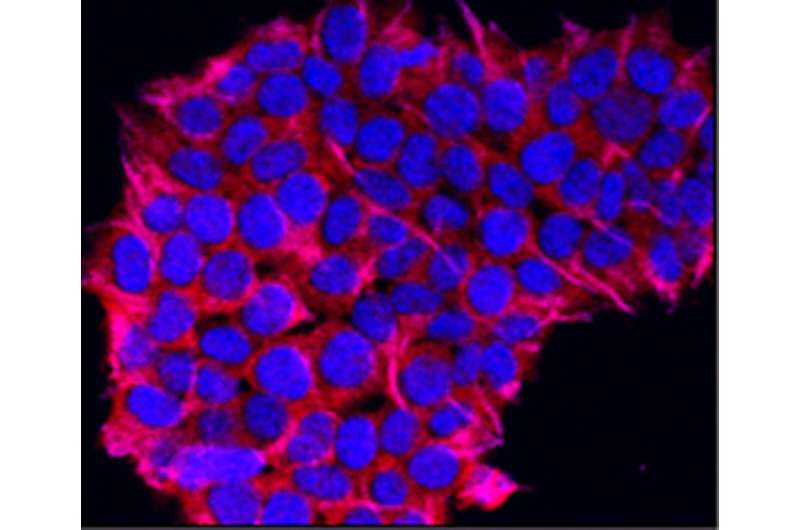This article has been reviewed according to Science X's editorial process and policies. Editors have highlighted the following attributes while ensuring the content's credibility:
fact-checked
trusted source
proofread
Outpatient stem cell transplants result in less hospitalization time for multiple myeloma patients, study finds

Most multiple myeloma patients undergoing stem cell transplants of their own cells can safely be treated in an outpatient setting, thus reducing costs, reducing hospitalization time and potentially increasing patient satisfaction, according to a retrospective study published in Hematology/Oncology and Stem Cell Therapy by MUSC Hollings Cancer Center researchers.
Hematologist oncologist Hamza Hashmi, M.D., and Andy Maldonado, Pharm.D., were among the team members that compared the records of MUSC Health patients who had been treated in inpatient versus outpatient settings.
"Traditionally, stem cell transplants have occurred in an inpatient setting," Hashmi said. "A patient would be admitted to the hospital to receive chemotherapy, which kills the cancer and clears space for the patient's previously harvested healthy stem cells, and then would receive the infusion of his or her own healthy cells. The process would take about four days."
But in 2018, the Hollings program began doing all of this in the outpatient setting, unless the patient's health required inpatient care. To check results, the team then looked at how 100 patients fared between 2016 and 2019—50 who received transplants on an outpatient basis and 50 on an inpatient basis.
Both groups had similar rates of hospitalization after transplant. But the group who went through the transplant process in the hospital was more likely to be hospitalized more than once and spent more days in the hospital, even accounting for the initial hospitalization of approximately four days to conduct the transplant. The inpatient group had a median of 15.5 days in the hospital while the outpatient group had a median of 8.5 days in the hospital.
"So there is a seven-day reduction in the length of hospital stay and that actually is a very effective strategy," Hashmi said.
It also helps to save money. The team homed in on the cost of melphalan, the chemotherapy drug given in preparation for the stem cell transplant. Because reimbursement rates for the drug are different in the outpatient and inpatient settings, Maldonado explained, performing the transplant in the outpatient setting saved more than $200,000 across the 50 patients.
"We're working to reduce drug costs and trying to be really cognizant of the fact that the costs of chemotherapy and cancer treatment are just exorbitant. This is just one way that we're trying to reduce costs for patients, and we had really great clinical outcomes as well," she said.
The reduction in length in hospital stay also led to cost savings, both because of the overall number of days and because of how the Centers for Medicare and Medicaid Services reimburses for initial hospitalizations compared to readmissions.
At this point, about 80% of the Hollings multiple myeloma patients who receive autologous stem cell transplants, or transplants of their own cells, now do so in an outpatient setting. Maldonado and Hashmi said that exceptions are patients who need additional observation because of other conditions, like irregular heartbeats or poor kidney function, and patients who don't have enough caregiver help at home.
Cancer centers across the U.S. are moving toward more outpatient procedures, Hashmi said. In general, outpatient procedures have been associated with fewer infections, shorter hospital stays and better patient satisfaction, so if the procedure can be completed safely on an outpatient basis, it makes sense to do so, he said. Still, many centers have yet to make the transition.
Hashmi noted that this retrospective study shows one of the benefits of being an NCI-designated cancer center.
"NCI designation plays a major role in having research ideas implemented into practice and then showing the benefit in regard to outcomes for patients," he said.
More information: Jessica Marini et al, Effectiveness, safety and cost implications of outpatient autologous hematopoietic stem cell transplant for multiple myeloma, Hematology/Oncology and Stem Cell Therapy (2023). DOI: 10.56875/2589-0646.1038



















